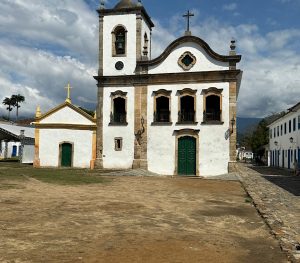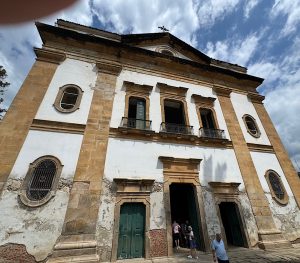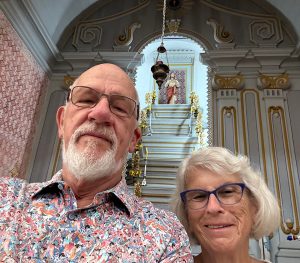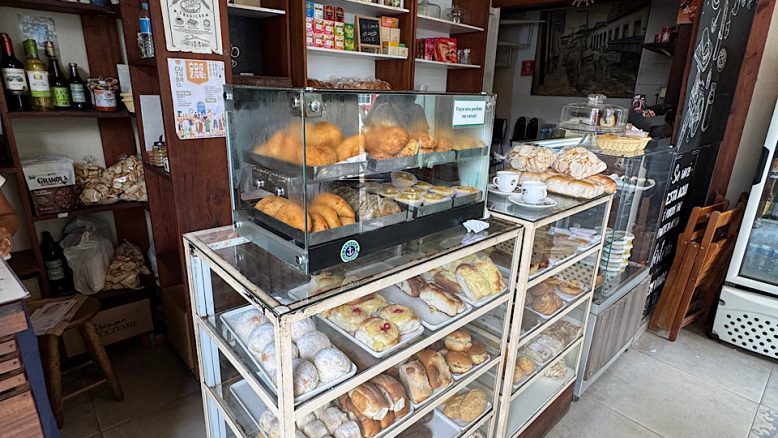In the glass case the morning pastries trigger mouths to salivate. In Paraty the bakery draws eyes and feet through the door to sample and savour the array of fresh rolls. The displayed offering made to everyone living along the cobblestone walkways. Wobble stones as a weak ankled visitor declared. Walking the oft flooded streets opens the ears to the history lessons. The church was constructed to serve a slave and coloured community. The labour was used to build the highway to gold. The church was used to prey on the weak. The history lessons struggle to bury the stories. The many examples of power over.

Across town on higher ground, the church for the oligarchy was built with balcony seats and boxes for the wealthy elite in the community. A white racist church. The lines of division according to racial lines and “careers” or “forced careers” cut across the community well into the twentieth century. A history that concatenates the worst of imperialism, slavery and resource-extraction darkens the community. Yet the coloured doorways, the revolution of an enslaved peoples and the transition to a new and renewed economy changes and charges the island with new life. The world heritage site, the state park and education of the people announce with some hope a service economy.

As a visitor one is easily torn between voyeur and condescending foreigner. Then in the unused corners of a church, in a cornered chapel below the black molded ceiling the arms of welcome wave to all those seeking “a stairway to heaven.” The song is not as liberating as it might sound. The stairway still carries images of power in its hope of ascension! The rolls on the table are food and drink offered by the baker of heaven!

